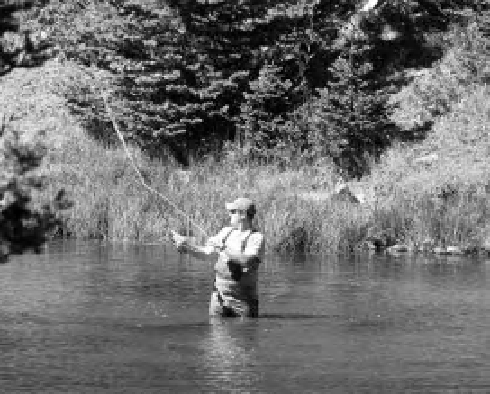Geoscience Reference
In-Depth Information
Incentive- or disincentive-based mechanisms
may be informally or formally established and
implemented. Informal mechanisms are those
that are generally agreed upon and observed by
different parties even in the absence of any
formal rules that require them to participate.
The most common form of an informal mecha-
nism is moral suasion. Urging individuals to
adopt conservation practices by “doing the right
thing” and appealing to their civic and ethical
responsibilities toward the environment is a
classic example of moral suasion. Rather than
coercive measures that enforce rules of environ-
mental use, moral suasion relies on the volun-
tary adoption of best practices (Weersink 2002).
The 1960s environmental movement pro-
vides a classic example of moral suasion
changing the attitudes and practices of people
worldwide with respect to the environment,
natural resource use, recycling, the ethical treat-
ment of non-humans, and so on (Handy 2001).
Positive spillover effects tend to be high when
moral suasion is applied, as it is not limited to
targeting just one environmental practice; rather
it works to voluntarily change a particular mind-
set (van Kooten and Schmitz 1992). The strategy
followed by the Canadian Ministry of Agricul-
ture vis-à-vis the adoption of sustainable agri-
cultural practices provides a good example
(Weersink 2002). The Ministry hopes to per-
suade farmers to adopt more sustainable prac-
tices by conducting education and awareness
campaigns, rather than implementing more
restrictive mandates. Chapter 14 discusses how
Canada has used a similar approach when
implementing wetlands policy.
Some social scientists disagree, however, that
such voluntary measures are effective. They
argue that not all individuals are swayed into
adopting conservation practices based on
civic, ethical, or moral arguments and hence
the potential for the “free rider“ problem is high
with voluntary measures. Moreover, moral
suasion suggests that individuals have few
other constraints placed on them when adopt-
ing conservation practices. This is not the case,
particularly in the developing world where com-
munities are entirely dependent on wetland
resources to meet basic needs. Poverty or other
Figure 12-6.
Fly i shing in a shallow subalpine lake
that is stocked for sport i shing in the Culebra Range,
Sangre de Cristo Mountains of southern Colorado,
United States. Photo by J.S. Aber.
Herbicides are used to temporarily manage
invasive vegetation when all other methods fail
to control its spread. The problems with non-
selective herbicide use are widely reported.
Targeted herbicide applications need to be
undertaken with care, under calm wind condi-
tions and where treatment is limited to smaller
regions. Herbicide applications are often under-
taken with other control measures such as
burning, disking, or l ooding to improve success
rates.
12.4.3 Socio-economic strategies
The strategies outlined above describe specii c
techniques to manage wetland ecosystems
across the world. Social scientists have also
rel ected on what sorts of mechanisms could
inl uence human behavior to realize desirable
environmental ends, whether those include
reducing pollution or engaging in sustainable
resource extraction practices. Socio-economic
strategies encompass a broad range of mecha-
nisms or instruments that are used to guide and
regulate human access to and use of environ-
mental goods and services. These instruments
rel ect the broader geographic and policy
context of the region within which they are
implemented and generally direct behavior
through a series of incentives or disincentives.





